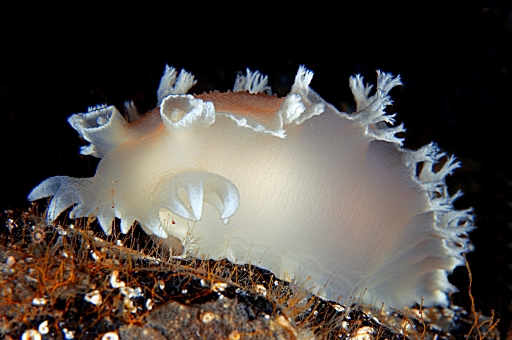You are 100 feet down using scuba, with your dive light spotlighting the most exotic looking Sea Hare you’ve ever seen. 
It’s noon at McMurdo Station, Antarctica but it’s dark at your depth because between you and the surface of the Ross Sea lies19 feet of snow-covered ice. Your dive buddy has drifted about 100 feet away, but you can see him without hindrance in the gin clear water of the early Antarctic springtime.
The 800 foot water visibility also means you can easily see the strobe light hanging on the down line 200 feet away, the line leading to the three and a half foot diameter hole bored through the ice.
Under these conditions, you should not have to worry about your regulator, but you do, because you know that any scuba regulator can fail in 28° F water, given enough opportunity. You also know that some regulators tolerate these polar conditions better than others, and you are using untested regulators, so yours might free-flow massively at any moment.
Should that happen, you have a back-up plan; you will shut off the free flow of air from your failed regulator with an isolation valve, remove the failed second stage from your numb and stiff lips and switch to a separate first and second stage regulator on your bottle’s Y-shaped slingshot manifold, after first reaching back and opening the manifold valve. Of course, that backup regulator could also free-flow as soon as you start breathing on it – as has already happened to one of your fellow test divers.
In that situation you would have no choice except to continue breathing from what feels like a torrent of liquid nitrogen, teeth aching from the frigid air chilled to almost intolerable temperatures by unbridled adiabatic expansion, until you reach your dive buddy and convince him that you need to borrow his backup regulator. Once he understands the gravity of the situation, that two of your regulators have failed, then the two of you would buddy-breathe from his single 95 cu ft bottle as you head slowly towards the strobe marking the ascent line. And of course he will be praying that his own primary regulator doesn’t fail during that transit.
Once you reach the ascent line you are still not out of difficulty. The two of you cannot surface together through the narrow 19-foot long borehole. So you would remove your regulator once again and start breathing off a pony bottle secured to the down line. Once it is released from the line, you can then make your ascent to the surface; but only if a 1300-pound Weddell seal has not appropriated the hole. In a contest for air, the seal is far more desperate following an 80 minute breath-hold dive, and certainly much more massive than you. Weddells are like icebergs – their cute small face sits atop a massive body that is a daunting obstacle for any diver. 
But you even have a plan for that — you’ve heard that Weddell seals don’t like bubbles, and they get skittish about having their fins tugged on, and will thus relinquish the hole to you. … At least, that’s what you’ve been told. You certainly hope he would leave before you consume the meager amount of air in your pony bottle.
The text above was taken from a U.S. Navy Faceplate article I wrote concerning a 2009 Smithsonian Institution sponsored diving expedition to Antarctica in which I participated. On and under-the-ice photos were taken by expedition members Drs. Martin Sayer and Sergio Angelini.









